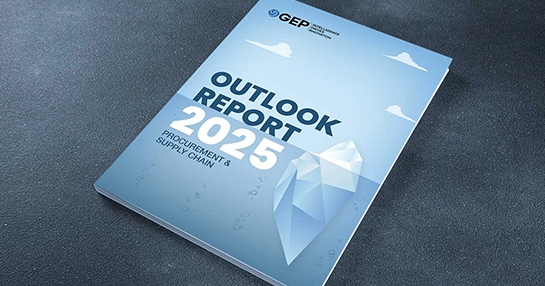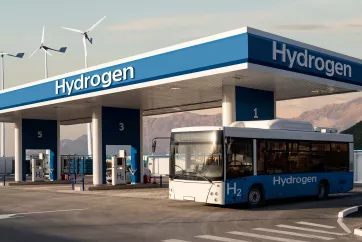
Scope 3 Emissions: How to Overcome Data Collection Hurdles
- Lack of reliable supplier data and inconsistent data quality make it difficult to collect Scope 3 emissions data.
- Begin Scope 3 data collection by prioritizing high-impact categories and strengthening supplier collaboration.
- Streamline data collection with transparent reporting, optimized methodologies and continuous quality improvements.
April 10, 2025 | Sustainability
As sustainability takes center stage, organizations are scrutinizing their carbon footprints more than ever. While Scope 1 (direct emissions) and Scope 2 (indirect emissions from purchased energy) are relatively straightforward to track, Scope 3 emissions pose a much greater challenge. These indirect emissions—spread across an organization’s entire value chain—often account for the largest share of total greenhouse gas (GHG) emissions.
Collecting accurate Scope 3 data is crucial for setting credible reduction targets and driving meaningful climate action. However, it is complex, resource-intensive, and often riddled with data gaps. This blog explores the challenges of Scope 3 emissions data collection and outlines effective strategies to streamline the process.
Understanding Scope 3 Emissions
Scope 3 emissions include all indirect emissions generated throughout a company’s value chain. They fall into two broad categories:
• Upstream Emissions
These arise from purchased goods and services, transportation, waste management, and employee commuting.
• Downstream Emissions
These encompass product use, end-of-life treatment, investments, and distribution.
The Greenhouse Gas (GHG) Protocol categorizes Scope 3 emissions into 15 distinct groups, making accurate data collection a formidable task. Unlike Scope 1 and Scope 2, which are confined to direct operations and purchased energy, Scope 3 requires extensive collaboration with suppliers, customers, and various stakeholders.
Challenges in Collecting Scope 3 Emissions Data
1. Limited Data Availability
One of the biggest hurdles is obtaining reliable data from suppliers. Many lack the tools, expertise, or infrastructure to measure their own emissions accurately—leading to inconsistencies, incomplete data, or even a complete lack of reporting.
2. Inconsistent Data Quality
Even when data is available, quality varies. Suppliers may use outdated methodologies, rely on estimates, or omit crucial details. For example, a supplier might report energy consumption but fail to account for transportation-related emissions—creating blind spots in your analysis.
3. Complex Value Chains
Scope 3 spans multiple supply chain tiers—from Tier 1 suppliers (those you contract directly) to Tier 2 and beyond. The deeper you go, the harder it gets. Limited visibility, inconsistent reporting standards, and fragmented supplier networks further complicate data collection.
4. High Resource Demand
Tracking Scope 3 emissions is labor-intensive. Engaging multiple stakeholders, collecting and verifying data, and ensuring compliance with global reporting standards can take months—or even years—especially for organizations with vast, global supply chains.
Strategies for Effective Data Collection
1. Prioritize High-Impact Categories
Given the scale of Scope 3 emissions, start by focusing on categories with the most significant impact. Purchased goods and services, for instance, often represent the largest share of emissions for many organizations.
Conduct an initial screening to identify key emission hotspots. By targeting high-impact areas first, companies can make meaningful progress while gradually expanding their data collection efforts.
2. Strengthen Supplier Relationships
Suppliers are key players in accurate emissions tracking. Building long-term relationships fosters trust and improves data reliability.
Engage Tier 1 suppliers directly—through training, workshops, or collaborative sustainability programs. Educate them on GHG reporting methodologies and support them in measuring their emissions more effectively.
3. Promote Transparency Across the Value Chain
Encourage open dialogue on emissions reporting. The more transparent suppliers and stakeholders are, the easier it becomes to identify gaps and improve data accuracy.
Consider incorporating emissions reporting into supplier contracts or performance reviews. This helps reinforce accountability and ensures sustainability remains a shared priority.
4. Optimize Data Collection Methods
Where direct data isn’t available, leverage proxy data or industry averages—but do so cautiously. Any assumptions should be well-documented and sourced from credible benchmarks to maintain accuracy.
5. Continuously Improve Data Quality
Think of Scope 3 data collection as an iterative process, not a one-time task. Start with available sources, but refine your approach over time. Encourage suppliers to adopt better measurement tools and methodologies—ensuring steady improvements in data accuracy.
The Impact of Accurate Scope 3 Data Collection
Investing in robust data collection doesn’t just support compliance—it drives strategic decision-making and positions businesses as sustainability leaders.
1. Better Decision-Making
Understanding emission hotspots helps organizations target reduction initiatives more effectively.
2. Enhanced Stakeholder Trust
Transparent reporting builds credibility with investors, customers, regulators, and other key players.
3. Regulatory Compliance
Aligning with global frameworks—such as the Carbon Disclosure Project (CDP) and the Science-Based Targets initiative (SBTi)—ensures compliance with evolving regulations.
4. Operational Efficiency
Identifying inefficiencies, such as excessive transportation-related emissions, can unlock cost savings while improving environmental impact.
Also Read: Supply Chain Leaders Are Prioritizing These Sustainability Strategies
Catalyst for Change
Scope 3 emissions data collection presents both challenges and opportunities. While data collection is complex, businesses that invest in supplier engagement, process optimization, and continuous improvement can gain a competitive edge.
Accurate Scope 3 reporting isn’t just about compliance—it’s a catalyst for meaningful climate action. By tackling data quality issues and streamlining collection efforts, organizations can drive impactful change, build stakeholder confidence, and lead the way in corporate sustainability.



